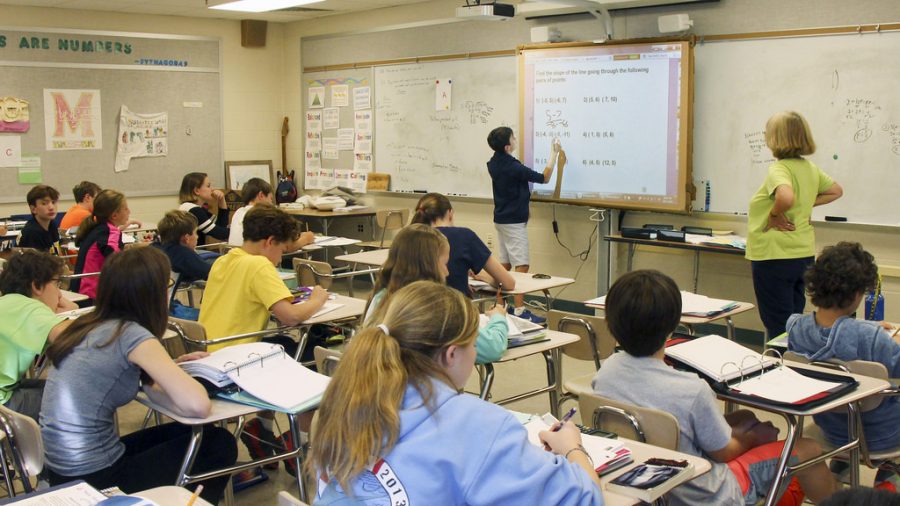MCPS high school graduation requirements are unnecessary
A student participates in a required math course.
March 27, 2019
Four English credits, four math credits, three science credits, three social studies credits, four and a half elective credits, one art credit, one P.E. credit, one technology and half of a health credit for an astounding total of…22 credits. These are the current credit requirements for high school students to graduate MCPS. Some of these extensive requirements are incredibly unnecessary and cutting them could save a lot of time and energy.
For starters, MCPS’s requirement of one entire year of P.E. is an undue burden, as Maryland actually only requires half a credit or one semester according to the MCPS’ website. Counties such as Prince George and Frederick have taken advantage of this and only require a semester of P.E., which allows students to complete both the health and P.E. credit at once, freeing up valuable time later in their high school career or summer.
Additionally, art is a very specific interest and aspiration and though there are a variety of different arts, such as theater, instrumental music, chorus and visual art, it all boils downs to it falling on what an individual person really wants to pursue. A well-rounded student can be achieved through extracurriculars without putting in so much time in something that is not interesting to them. According to their website, MCPS’ reasoning for having the P.E. and art credit is for students to learn interpersonal and social skills and to express themselves creatively, but this can be achieved in other subjects the student is actually interested in while also saving a vast amount of energy.
Students are always welcome to take these courses if it is what they are really passionate about, but these are not necessarily core subjects that every student should have knowledge of. On the other hand, even the core subjects—math, English, science and social studies—are not essential to every student. A better course of action would be to reduce the number of these required credits so students can have a more flexible schedule. Freshman Keely DeGasperis said, “A lot of colleges require students to do extracurriculars and they don’t have time for that if they have a million classes.”
It should be a student’s personal decision on what they want their high school career to look like. They know what is best for them, and restricting a student’s ability to choose hinders their ability to grow. Reducing the number of credits and required classes would allow students to take things at their own pace, rather than trying to cram all of their required credit classes along with classes they want to take but may not fulfill a credit requirement. This is especially stressful for seniors who may not be able to graduate if they don’t have all their credits completed and have limited space in what they can still take.
Students in magnet programs such as IB, math and science, humanities, and global have it even harder. There is an additional set of very specific course requirements that reduce the space a student has in their schedule. This could mean their schedule is packed with six required magnet classes, leaving them with only one elective course. They might have to end of picking between a course they are very passionate about or technology or art which is a required credit and they may not have any interest in.
Make it more efficient for students everywhere to learn and study what is important to them, not what people who are disconnected think is important. The system is broken, but we have all heard that many times before. That is why now is the time for change, new ideas, and first steps in the reformation of education.



